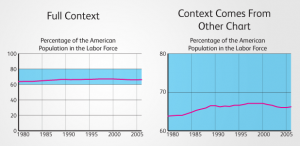Many infographics are sourced with data sets, databases or long lists of URLs. These kinds of sources are invaluable when they exist and contain relevant and accurate data, but there is an underused network of information that’s a little harder to Google: real-life conversations with people. It can be all too easy to never pick up the phone when doing research, but when data is unclear or Google isn’t doing the trick…
…nothing is more concrete than wise words from experts.
A couple of weeks ago, I researched a timeline of HTML5 and its corporate adoption. I checked Wikipedia, used Google and did searches of news clips. But although I found some factoids, I knew little about their relative importance. This is where talking to people came in – I quickly found programmers, business owners, tech journalists and a representative from Opera Software, a company which helped create HTML5. Were these experts able to do my work for me? Of course not. At best, they gave me four or five events combined to put on the timeline. But they led me on the right track to getting more information, helped me better define the research I was doing and they were able to fact-check some of the data that I was getting online. For example, when I began looking at HTML5, I didn’t even know very much about what that meant, until I had experts explain that it was a buzzword for several different new technologies including CSS3, some JavaScript functions and not using Flash for interactivity. One expert even taught me how to distinguish HTML5 pages from non-HTML5 pages by looking at the source code. There are some challenges to using people instead of URLs: For one, unlike regular articles or blog posts, where you have a narrative that includes quotes (which are by nature attributed to their sources), graphics don’t leave a lot of space for credits. This can be problematic if experts are speaking to you because they see it as publicity. If you are not the person designing the graphic, make sure you don’t promise them that their name will be mentioned if you cannot guarantee it. You can ask the designer to add the names of people you interviewed to the source list, which is commonly added to the bottom of an infographic. If for any reason a source list will not be included, you could thank them by mentioning their names and companies in a short write-up for the infographic published on your or any other blog. Another issue is that people are not spreadsheets. They will not spit flawless facts out at you complete with names, dates and their own sources. However, they will help you put your data in context, help you question your own research and get you a little closer to accuracy, which is what data is all about. I’d like to give a special thank you to Bruce Lawson from Opera, Andrew Schrage from Money Crashers, Jimi Smoot from PK4 Media and Mike Wilcox for all of their help on my most recent research. Stephanie Vatz is a new media convert from an old media background. She recently received her master’s degree from Columbia Journalism School and is interested in digital storytelling. Follow her on Twitter. 








